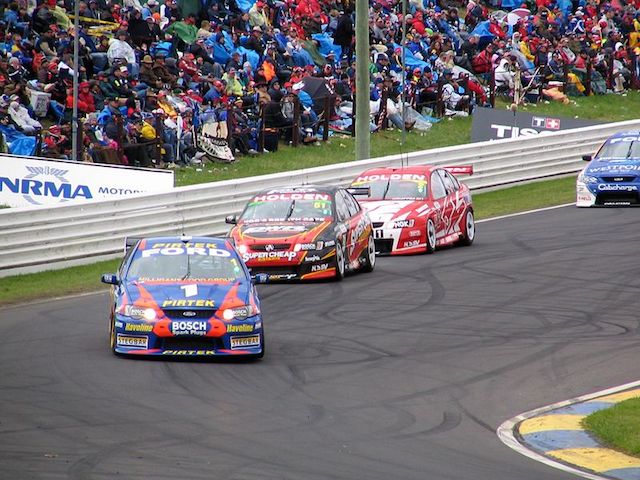This year marks the end of an era for supercar racing in Australia – it’s not that the Bathurst 1000 (also known as the Supercheap Auto Bathurst 1000) is finishing – it’s not, and plans are already underway for the 2018 race.

No, it’s more to do with the cars that will be racing. As of 2018, the traditional Ford and Holden V8s will firstly no longer be based on Australian-manufactured production vehicles (since Ford has already stopped production here and Holden will shortly), and secondly, the V8 engine format will not continue, at least for Holden, who next year will be competing in a car not only designed but manufactured in Europe rather than Australia, in either a four-cylinder turbo or V6 all-wheel drive format.
So, sadly, gone are the days of the Ford and Holden V8s battling it out for dominance on Mount Panorama.
Bathurst has been home to motorsport since 1963 when the Armstrong 500 race, previously held at Phillip Island, relocated there. The original race was – as the name implied – over a 500-mile circuit, which doubled up at Bathurst to the current 1000-mile race.
Over the years, many different classes of cars – from production saloon cars to various classes of touring cars – have raced in the Bathurst 1000, but as of 1999 the race swapped to the supercar category and, since then, has been one of the venues for this championship.
You might be forgiven for thinking that it’s only about the two (former) local manufacturers – Ford and Holden – but that’s not strictly the case. Other marques do take part, such as BMW, Nissan and Volvo, but given the main attraction of the event has been the Holden vs Ford battle, other marques were completely excluded from the race from 1999 until 2012. They were allowed back in 2013, but only Nissan has had any success on the track since then.
As things stand, Holden is ahead of Ford with 32 wins against Ford’s 20.
Many famous drivers have competed over the years, including Bob Jane (as in Bob Jane T Marts) and Jacky Ickx (who went on to F1), but the undisputed ‘King of the Mountain’ is the late Peter Brock, who won the race nine times between 1972 and 1987, two wins ahead of his nearest rival Jim Richards.
What makes the Bathurst track different to most other racing tracks around Australia, or even the world, is the height variation – the highest point is vertically 174m above the lowest point (hence the name ‘Mount Panorama’) and the resultant unique driving experience which makes watching Bathurst very different from other motorsport races.
It’s also technically on public roads (although you’d be hard-pressed to see the difference on the TV when the race is on) – it’s only closed off to general traffic during racing events, and in fact, some properties can only be accessed from roads that form part of the track, which must make it interesting when the races are on. Anybody wanting to ‘give the track a go’ should know that the local police rigorously enforce the normal 60 km/h speed limit.
It will be interesting to see what happens at the race next year without the deafening roar of the V8 – a specially built ‘Sandman’ Holden was driven around the circuit, powered by the new twin-turbo V6, which (as explained above) will replace the current V8 engine. The driver – Greg Murphy – liked it, but some of the spectators were disappointed it was so quiet compared to the V8’s. Comes to something when people complain a car is too quiet.
Image credit: https://commons.wikimedia.org/wiki/User:Benchill




